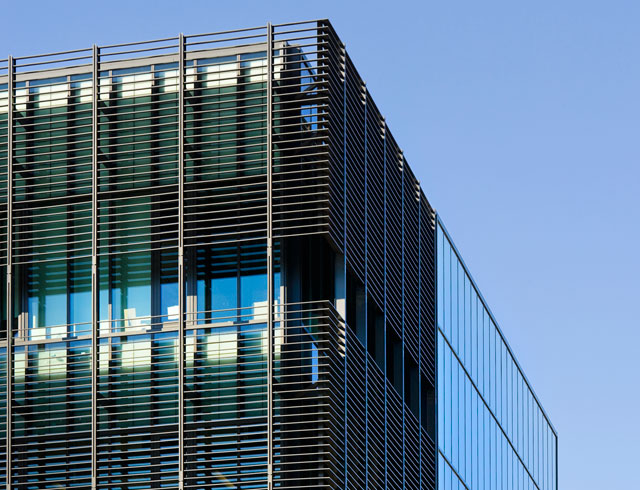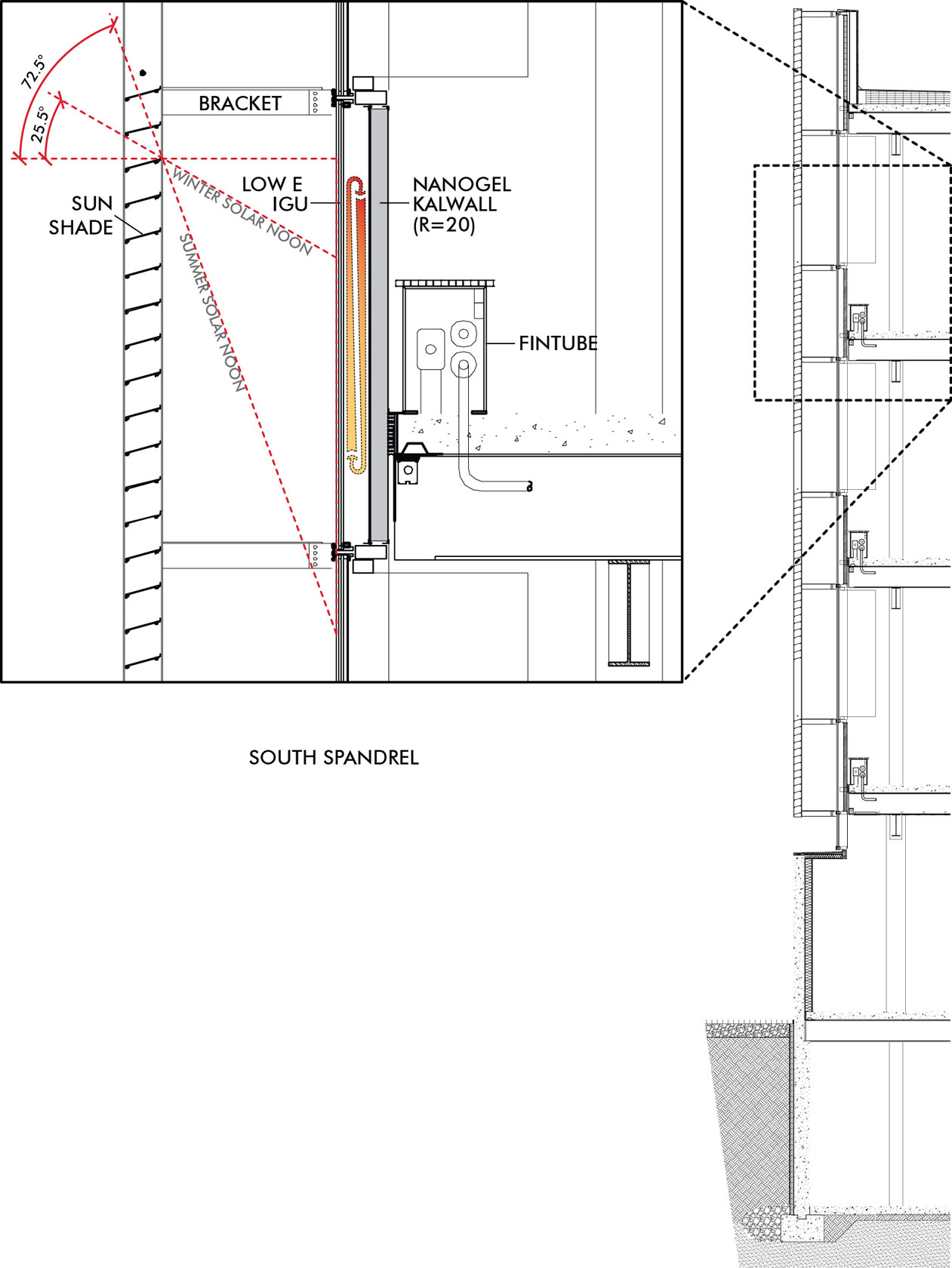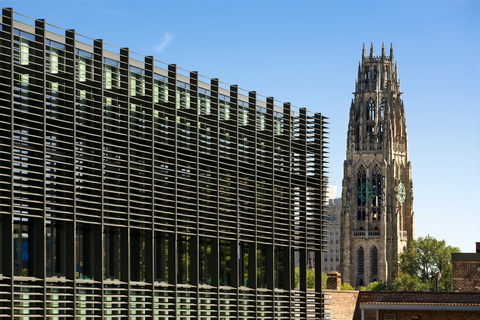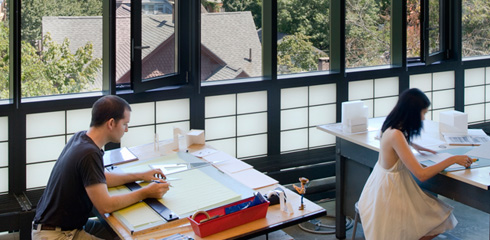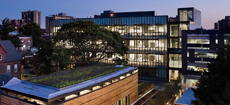Creating a Curtainwall of Optimal Performance
Southeast corner of the high-performing curtainwall at the Yale Sculpture Building.
© Peter Aaron/OTTO
Completed in 2006, the Yale University Sculpture Building is a 51,000 square-foot studio space for the undergraduate and graduate sculpture programs of the School of Art. The building called for an exceptional quality of light, low energy usage, and operable windows. A climate analysis performed on the site indicated a strong seasonal variation, with significant heating loads during the winter and cooling loads in the summer. This presented the opportunity to advance solar wall technology in partnership with a curtainwall manufacturer.
Section diagram, Yale University Sculpture Building
We worked with Schuco and Kalwall Corporation to develop a wall system that incorporates solar shading, a triple glazed low-e vision panel, 8 foot-high operable windows, and a translucent double cavity spandrel panel. As a result, the entire skin of the building admits natural light and actively works to control the temperature in the interior.
The spandrel consists of a low-E IGU at the exterior, a three-inch cavity, and a two and a half-inch Kalwall panel filled with aerogel insulation. Both the IGU and the Kalwall are glazed directly into the thermally broken curtainwall mullion. Testing has suggested that the overall R value of the spandrel assembly is in excess of R 20, while maintaining 20% visible light transmittance. The cavity traps solar radiation, forming a warm air layer that further increases thermal performance when the sun is shining.



